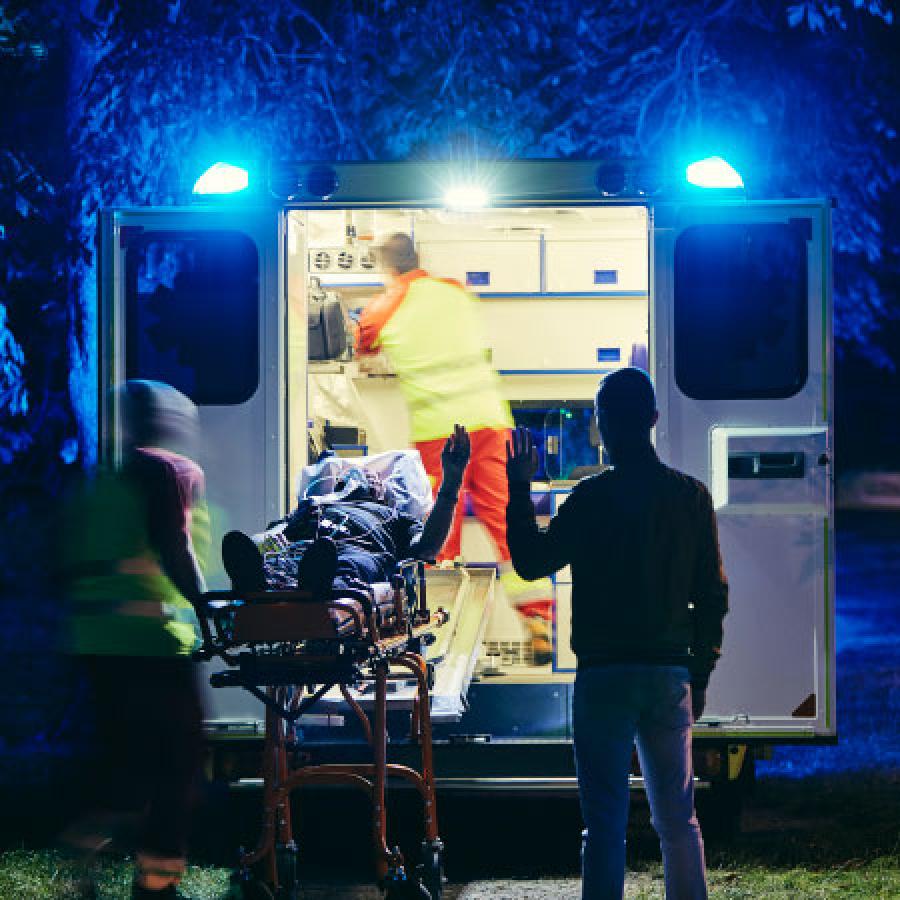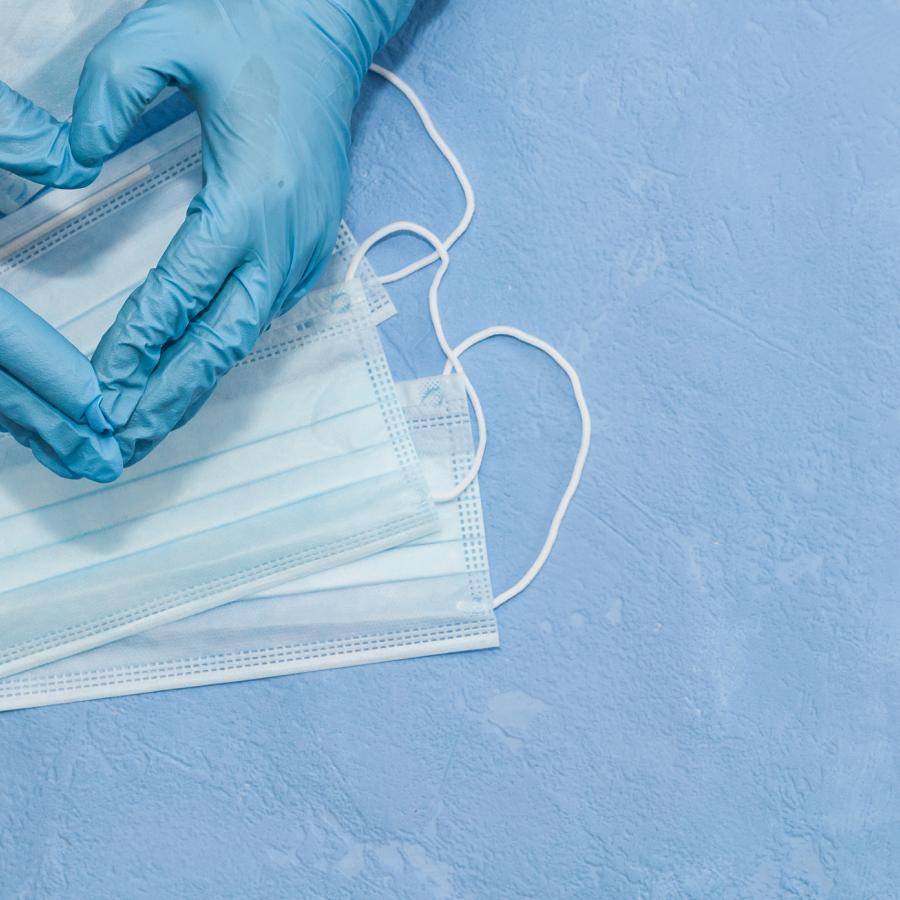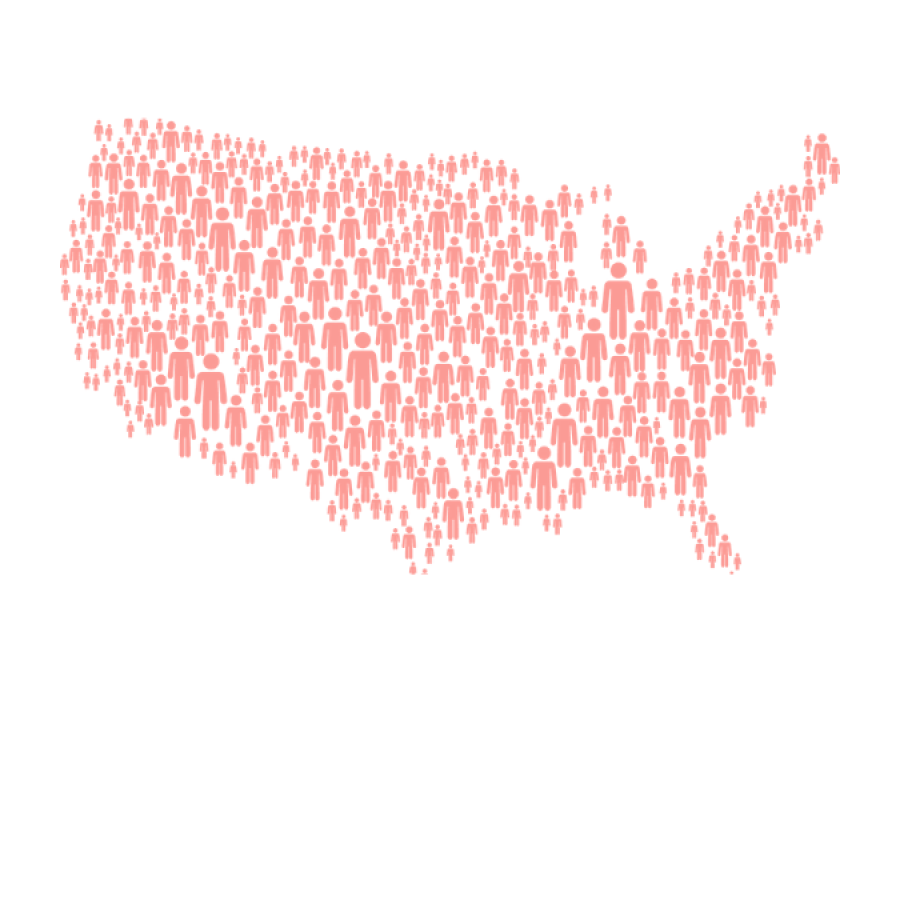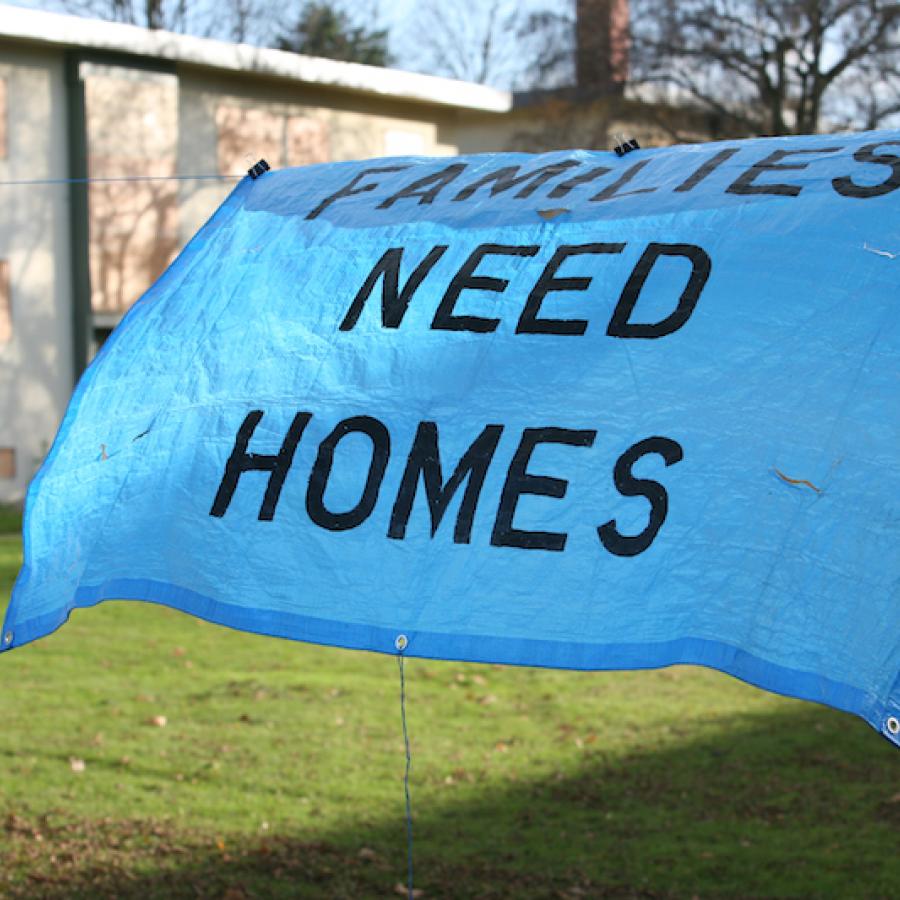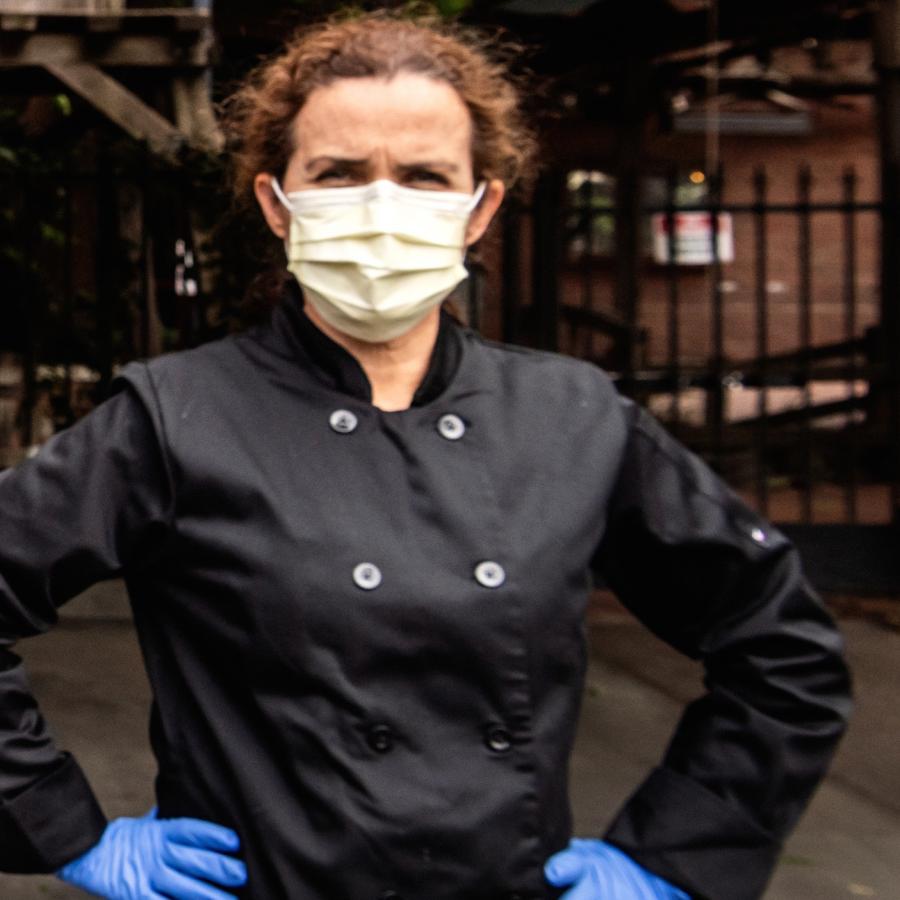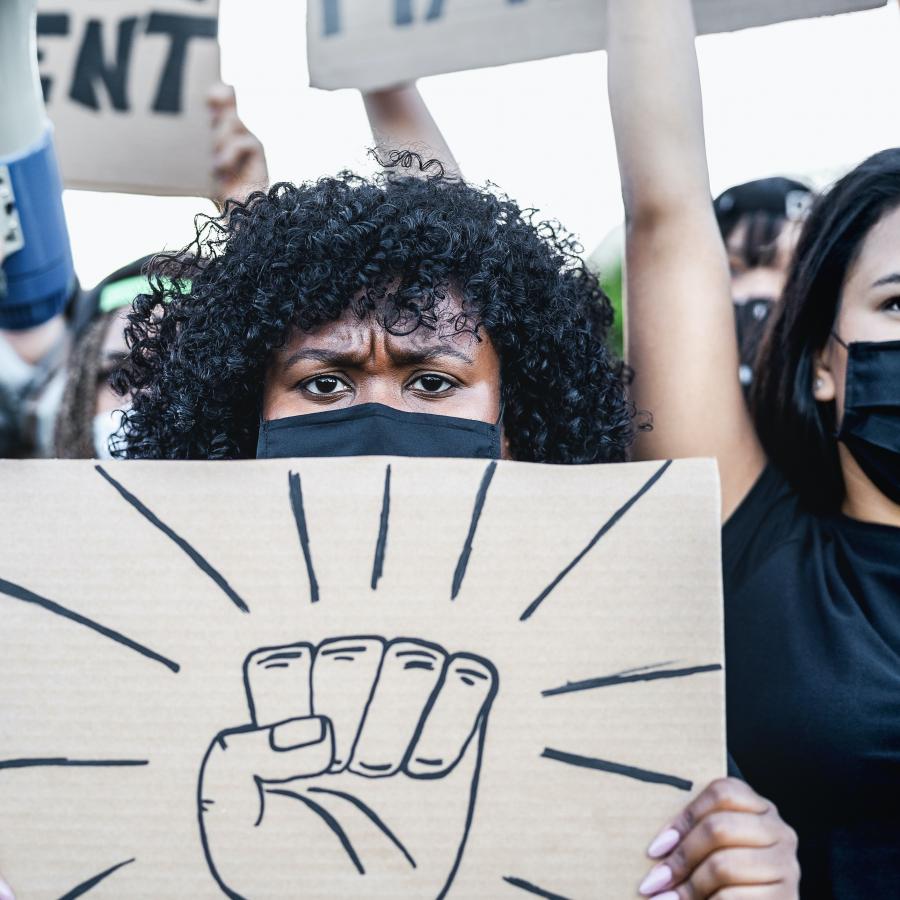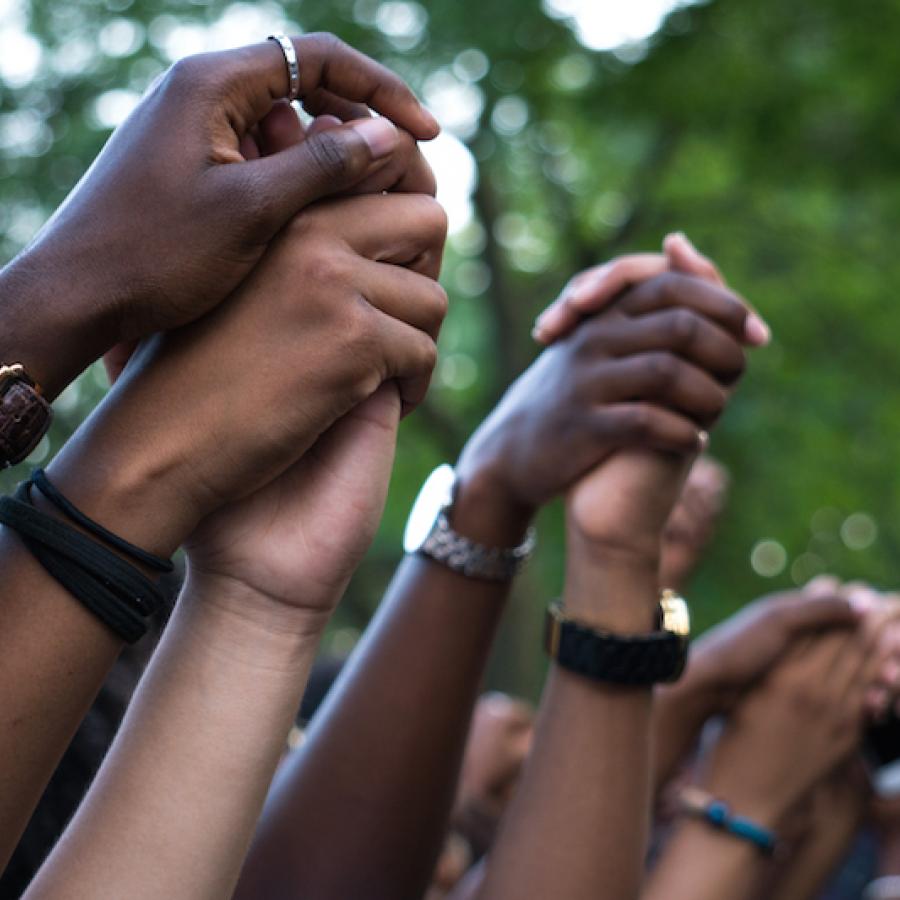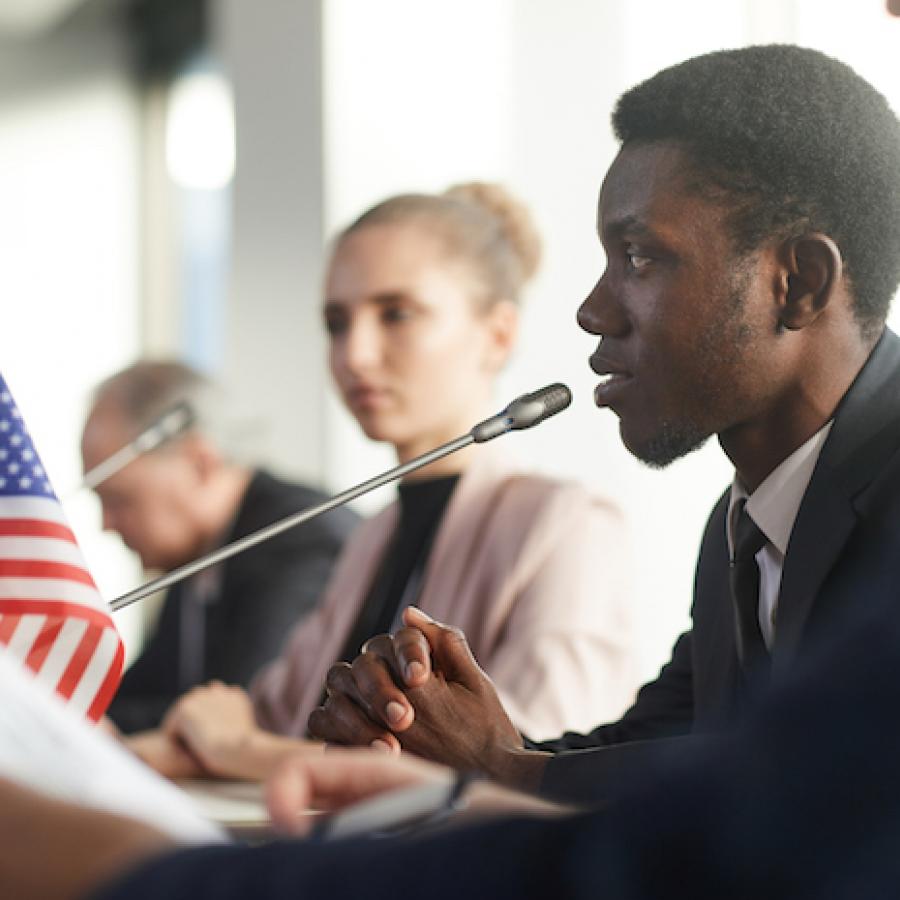This week’s COVID-19 and Race Commentary explores how cities and states can fight anti-Blackness through budget justice, address structural racism, and invest in comprehensive strategies that rebuild communities.
Issue No 9. June 10, 2020
Fighting Anti-Blackness Through Budget Justice
By Marc Philpart and Chione L. Flegal
In Minneapolis, the majority of the city council pledged to dismantle the police department and the school board finally listened to youth and parent organizers and canceled its contract that paid for city police to be stationed in schools. In Portland, Oregon, the school superintendent vowed to do the same and shift money previously spent on police to counselors and other youth support services. In San Francisco, the mayor has announced plans to redirect police spending to the Black community.
For many jurisdictions, the annual approval of budgets is happening now through the fall. California lawmakers will settle on a budget this week. These processes, usually routine, go to the heart of the national uprising for racial justice. Amid fury and anguish over the racist murder of George Floyd and a pandemic that has disproportionately harmed people of color, government leaders are being held to account for perverse budget priorities that spend far too much on racially motivated policing and punishment, and far too little on what communities really need to be safe, healthy, and prosperous.
Budgets are much more than numbers. They are a social contract that reflects our collective moral priorities and values. We contribute our tax dollars in exchange for services and investments that advance our social goals. When Black Lives Matter organizers call for defunding police, they’re saying this contract is horribly broken for Black people.
The United States spends twice as much on law and order as on social services such as food support and cash assistance for families in need, according to a 2019 book, The Triumph of Injustice: How the Rich Dodge Taxes and How to Make Them Pay, by UC Berkeley economists Emmanuel Saez and Gabriel Zucman. This research also found that America’s richest billionaires paid a lower tax rate than working people, especially those earning lower incomes. The nation has never prioritized investments in people of color and their communities, giving rise to the immoral approach to taxation and spending which took off in the 1980s with the War on Drugs. It dramatically increased spending on police and prisons in the name of community safety, while cutting taxes for the rich in the name of “trickle-down economics.”
These failed policies lead straight to today’s crises in justice, health, and employment, and they are unacceptable. They have spurred a moral call to action throughout the nation. It is inhumane to slash support for the most vulnerable when it is needed for basic survival, and it is unjust to spend finite resources in ways that further systematic oppression.
In this unprecedented moment, many people are asking, “How can I stand up for Black lives and racial justice?”
Organizers are showing the way. They are confronting local and state government leaders who claim COVID-19 revenue and job losses are forcing them to make draconian budget cuts. In California, CURB, Color of Change, and Justice LA mobilized more than 700 people to demand a state “decarceration budget” that would shift spending from prisons to community-based services and housing. From Los Angeles to Nashville to Grand Rapids, organizers and community leaders are demanding a People’s Budget that prioritizes investments in systems that address the impact of racism.
The nation is watching to see if policymakers will accept the challenge presented by protesters and organizers to advance meaningful and transformative change. In New York City, after 10 days of mass protests, Mayor Bill de Blasio pledged to reduce the NYPD’s staggering $6 billion budget. In Oakland, California, with leadership from the Black Organizing Project, the School Board introduced a George Floyd Resolution to Eliminate the School Police Department, to be voted on later this month. It remains to be seen whether policymakers in these cities will deliver. Policymakers in some other cities are flatly rejecting the opportunity.
Beyond defunding police, there’s a broader need to rethink regressive tax systems and structures. Most state and local governments prioritize incentives for big businesses that remove their responsibility to pay their fair share, leaving poor people to pick up the tax tab. In the COVID-19 crisis, governments are already prioritizing the needs of big business in the name of saving jobs. But corporations have received bailouts without any requirements to save jobs. And the reality is that big businesses stand a better chance of weathering this recession than the elderly, the sick, the shut-in, the unhoused, the formerly incarcerated, youth of color, and mom-and-pop businesses owned by people of color. The wealthy are thriving — billionaires have become $565 billion richer since March 18, according to new research, even as nearly 45 million Americans have filed for unemployment.
As protests show no sign of slowing, the energy and attention in the streets must generate a groundswell of people demanding equity and justice in how we spend our tax dollars.
This moment calls for extraordinary investments in health, housing, education, jobs, and social services, not austerity measures or investments that diminish our communities rather than strengthen them. Decision makers can create more opportunity and safety for Black people and all people by prioritizing these investments and targeting them to the most vulnerable communities. Budget justice is essential for racial justice, and for finally creating a society in which Black Lives Matter.
Marc Philpart and Chione L. Flegal are Managing Directors of PolicyLink.
News, Analysis, and Commentary Curated from Around the Web
Mass demonstrations in all 50 states and across Europe, Asia, and Australia have upended careful plans for reopening. They also have altered the meaning of the fight against the coronavirus and illuminated the many toxic forces harming Black people and communities, physician Dhruv Khulla writes in The New Yorker. “Last month, we debated how far the virus could travel when we speak loudly, and how close together tables at restaurants should be; this month, we may learn how much virus is expelled from the nose and mouth when pepper spray irritates the lungs.”
Shocking as it was, George Floyd’s murder by a police officer was not surprising, Lauren Powell writes in Stat. “My biggest fear as a Black woman and public health leader was the all-too-likely murder of an unarmed Black person at the hands of police leading to mass protests amid the virulence of two infectious diseases: racism and COVID-19.” While Black people are all too aware of the pathology, symptoms, and antidote for the disease of racism, she writes, “it remains largely unrecognized, undiagnosed, untreated, and unbothered in White America.”
On the podcast The Daily, Nikole Hannah-Jones chronicles 72 hours of protests, tensions over looting, and violent reprisals by police. Many protesters, aware of the risk of viral transmission, wore masks and tried to practice social distancing, but said they were pulled into the streets by continuing police brutality and unacceptable Black deaths. “I cannot in good conscience let this moment pass me by,” a high school history teacher told the Los Angeles Times.
For many Black protesters, the fact that Black people are dying of COVID-19 at twice the rate of others is one more reason to protest, writes Akilah Johnson of ProPublica. Rashid Shabazz of Color Of Change writes in The Root about the connection between the police violence that left Eric Garner and George Floyd pleading to breathe, and a virus that’s killing Black people by destroying their lungs. “The underlying preconditions of systemic racism are forcing us to gasp for air, in many different ways.”
Officials across the country who have cautioned against reopening too fast have expressed concerns that crowded demonstrations will spread the coronavirus, especially in Black communities. The California Department of Public Health released guidelines for how to protest safely. Seattle virus expert Trevor Bedford posted a rough estimate on Twitter that each day of protests would result in about 3,000 new infections and 50 to 500 eventual deaths. Harvard epidemiologist Marc Lipsitch told the New York Times the projections were reasonable but if states where cases are still on the rise had acted to control the epidemic, that would “massively overshadow the effects of the protests,” and any future spike related to the demonstrations should not be used to let governments off the hook for their massive public health failure.
Around the country, physicians, nurses, and health-care workers have shown their support for the protests by rallying outside their hospitals, taking a knee, and in some cases joining crowded marches, carrying signs such as “White coats for Black lives,” Nikkei Asian Review reports. In Vox, public health experts explain why they’re supporting the protests despite the risks. “For people of color and Black folks, their cost of not doing something is a lot greater than potentially getting a virus,” said Aisha Langford, a Black researcher at NYU. Those words echoed on streets nationwide. Police brutality “is scarier to me than COVID,” Sade Roberts, a 27-year-old woman handing out pizza to protesters in Brooklyn, told the New York Times.
Two weeks in, protests continue to grow and spread. Aggressive, racialized police tactics and mass arrests make the risks worse, the New York Civil Liberties Union writes. “Bringing people into the criminal system at this moment is the worst possible outcome for both civil liberties and public health.”
How should the government respond to the demands for justice and do what it hasn’t done in four centuries — address systemic racism? A good place to start is with investments in community infrastructure, Geoffrey Canada argues in a CNBC op-ed. He urges leaders to adopt the kind of sweeping, results-focused approach he used in establishing the Harlem Children’s Zone: comprehensive strategies that make rebuilding community and the ending of generational poverty the goal.
On the Brookings blog, Camille Busette says it’s up to mayors and governors to act on racism; the White House and Congress have made it clear they won’t do what’s needed. She offers local and state officials a four-point framework: 1) Acknowledge racism through a public forum similar to the South Africa’s Truth and Reconciliation Commission; 2) Establish equity goals and a task force with significant Black and Brown representation; 3) Fund task force initiatives; and 4) Innovate.
In Columbus, Ohio, more than 1,200 business, institutional leaders, and others signed a letter supporting the city council’s resolution declaring racism a public health crisis, a statement that was in the works long before the pandemic. The new Bay Area Equity Atlas, by PolicyLink, is a valuable resource for tracking local and regional data on race and equity and advancing policy change.
The health crisis for low-wage essential workers continues unabated. Roughly two-thirds of grocery store clerks, delivery drivers, home health aides, and other workers were unable to practice social distancing on the job and many lacked access to masks, hand-washing opportunities, or training on coronavirus transmission, University of Massachusetts researchers find in one of the first studies to collect data on workplace safety (or lack of) for the people who have worked throughout pandemic shutdowns.
Amazon workers have documented more than 1,000 COVID-19 cases among the company’s warehouse workers as of May 20, and seven deaths, the Los Angeles Times reports. The paper profiles one worker who died, Harry Sentoso, a 63-year-old immigrant from Indonesia. Amazon has been hiring tens of thousands of workers since April to meet the deluge of online orders, and it has instituted new safety measures at its facilities, but the COVID-19 case count is still mounting.
Women of color sit at the intersection of the race, gender, and economic disparities exposed by the pandemic, and they should be at the center of policy solutions, Catherine Powell writes on Think Global Health. This moment should challenge the low value associated with the work that women — especially women of color — do in caring for children, the elderly, the sick, and others in need. The worker's “bill of rights” introduced by Senator Elizabeth Warren (D-MA) and Representative Ro Khanna (D-CA) would provide livable wages, safety protections, sick leave, and job security for all employees, including gig workers and independent contractors. For more on the pandemic’s toll on girls and women globally, read this, on New Security Beat.
The federal government has officially declared the obvious: The US is in a recession. And it has wiped out years of employment gains for women and people of color. Last year, women made up the majority of the US workforce for the first time in almost a decade, but they accounted for 55 percent of the job losses in March and April, and a much higher percentage in retail, travel, and hospitality — industries that are dominated by women and especially hard hit by the pandemic, Bloomberg reports.
Unemployment among Black workers fell to an all-time low just before the pandemic, but since it struck, Black employment has plummeted, the New York Times reports. “As the prospects for a rapid recovery dwindle and Americans face what could be a prolonged stretch of high unemployment and suppressed income growth, Black households are confronting the prospect of a widening economic chasm.”
US unemployment fell to 13.3 percent in the monthly employment snapshot released Friday by the Bureau of Labor Statistics — down from 14.7, the first decline since pandemic shutdowns began. But Black unemployment rose again, to 16.8 percent. Nevertheless, the president touted the “stupendous” jobs report as a “big step in our comeback,” NBC News reports. The network cites data from the Federal Reserve Bank of St. Louis that less than half of working-age Black Americans have a job, a statistic that one economist calls “massively alarming.”
Hours after the government released the monthly employment data on Friday, officials admitted they have been miscalculating the jobless rate since March, the Washington Post writes. The corrected overall rate for April was 19.7 percent, 5 percentage points higher than originally reported. The latest national rate is 16.3 percent, significantly higher than the number the president bragged about.
One tragic fallout of epic job losses in a nation with a tattered safety net: child hunger is soaring. The national rate of food insecurity tripled between March and April, and a May study by the Brookings Institution revealed that one-fifth of mothers were struggling to feed their kids, The Nation reports. The situation is far more dire for Black and Latinx families and in rural communities, where resources were already sparse.
Under pressure from advocates demanding a clearer picture of the pandemic’s disproportionate toll, the Trump administration has finally issued new requirements for states to report coronavirus data based on race, ethnicity, age, and gender of everyone tested for the virus. Jurisdictions that have been lagging on collecting this critical data can take a lesson from Anne Arundel County, Maryland, where the health department has a three-person office dedicated to studying and collecting local data on how race and ethnicity affect health outcomes. It’s the result of the decision last year to declare racism a public health concern, the Baltimore Sun reports.
As of June 3, roughly nine in 10 New Yorkers and Chicagoans who died of COVID-19 suffered from underlying chronic conditions — ailments much more prevalent among low-income people of color, the New York Times reports. A recent UCLA study of nationwide data shows the health gap has widened as income inequality has skyrocketed over the past 25 years.
In Chicago and other cities, deaths from opioid overdoses have increased dramatically this year, complicating the coronavirus response and making the pandemic worse, ProPublica Illinois reports. “If you’re alone, there’s nobody to give you the Narcan,” said a coroner. African Americans make up less than a quarter of Cook County residents, but half the confirmed opioid-related deaths this year. Adding to Chicago’s challenges, ProPublica Illinois reports the patchwork system of well-being checks in some public and subsidized housing for seniors has failed to prevent people from dying alone and undiscovered for days.
The high COVID-19 death rate among Black Americans has provoked baseless public and scientific speculation about genetic vulnerabilities, Clarence Gravlee writes on the Scientific American blog. But racism, not genetics, explains why Black people are dying, he argues. He traces the history of racialized views of biology, and the damage they have caused Black Americans.
To treat COVID-19 effectively, doctors must recognize how health and health care intersect with racial and social justice, a group of public health experts, physicians, medical students, and critical race scholars write in The Conversation. “Clinicians in training need to be grounded in the social determinants of health and critical race theory to prepare them for an ethical and effective pandemic response.”
PolicyLink draws from articles, videos, interviews, and other sources across platforms, as well as from our network of equity leaders and activists, to bring you the latest information about COVID-19 and race. We offer this resource to:
- Provide easy access to information on the dual health and economic crises facing people of color;
- Put and keep racial equity at the center of our collective understanding of the pandemic and the policies needed for relief and recovery; and
- Lift up useful data and insights that can fuel equity advocacy and campaigns.
Please share with your networks and send your ideas and feedback. And follow us on Twitter, LinkedIn, Facebook and Instagram. #COVIDandRace
We hope you find the COVID-19 and Race Series an important tool for keeping up with news about the virus and its impact on communities we serve. As a non-profit organization, PolicyLink is honored to provide resources to support the needs of our nation's 100 million economically insecure individuals. Generous partners like you make our work possible.
Michael McAfee and Angela Glover Blackwell are grateful for the contributions of Fran Smith, Milly Hawk Daniel, Rachel Gichinga, Glenda Johnson, Jennifer Pinto, Heather Tamir, Ana Louie, Janet Dickerson, and Mark Jones to produce the COVID-19 & Race Commentary.
